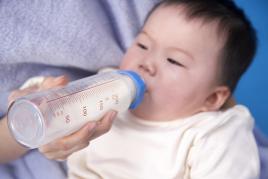ACF, USDS Develop Guide To Boost Child Care Assistance

Nothing ruins the holiday spirit more than trying to get something you desperately need, and either being confused as to how to get it or having to wait for it. That’s why we applaud the Department of Health and Human Services’ Administration for Children and Families (ACF) for releasing a new guide intended to help states and territories administering the Child Care Development Fund (CCDF) to identify and adopt best practices for applications and eligibility processing.
Working with the U.S. Digital Service (USDS), ACF has issued a guide on Creating a Family Friendly Child Care Assistance Application. This digital resource assists states on how to simplify the child care assistance application process for families and shorten the waiting period for families to receive services. “To develop the guide, [USDS and ACF] worked directly with families and state-led agency staff to understand what barriers prevent people from accessing assistance,” said USDS Administrator Mina Hsiang. “Using those learnings, this guide for states outlines clear steps to decrease or remove those barriers, simplifying and shortening the child care assistance application process and improving access to this critical support for the families who need it most.”
ACF noted that one of its priorities was to remove obstacles for families in need, and the agency especially deemed critical the importance of helping parents obtain child care assistance so that they can feel confident and supported in returning to work or education. Through these efforts, ACF is providing a road map for states to take their processes online and increase accessibility to families.
For example, the guide clarifies eligibility requirements under CCDF, noting that for a child to be eligible, a CCDF lead agency must determine that:
- The child is younger than 13 years old at the time of application. The lead agency is permitted to raise this age to younger than 19 if the child is physically or mentally unable to care for themselves or is under court supervision.
- The child either: (1) lives with a parent or parents, which can include parents, legal guardians, foster parents, or individuals acting in loco parentis (in place of a parent), who are working, attending job training, or attending an educational program; or (2) receives or needs to receive protective services. The lead agency is allowed to expand the definition of children eligible under this category to include a range of vulnerable populations.
- The child resides with a family whose total income does not exceed 85% of their state’s median income for a family of the same size, and whose assets do not exceed $1 million. The lead agency is permitted to waive the income requirement on a case-by-case basis if the child receives or needs to receive protective services per eligibility specified criteria.
A lead agency may establish eligibility requirements or priority rules that are stricter or in addition to those listed above, as long as they do not discriminate against children based on race, nationality, ethnicity, sex, religion or disability; limit parental rights; violate any parts of the federal rules; or impact eligibility other than at initial determination or subsequent periods of redetermination. In addition to the requirements outlined above, federal law requires that the child must be a citizen or a qualified noncitizen to receive federal public benefits. This requirement applies only to the child who is the primary beneficiary of the CCDF benefit. CCDF lead agencies are not permitted to request any information about the citizenship or immigration status of the parent, applicant or any other family members.
Join us for our following Thompson Grants events:
Federal Grants Forum for State & Local Governments | Feb. 15-16, 2022 | Virtual Event
Nonprofit Legal, Finance, and Grants Conference | April 6-7, 2023 | Washington, D.C.



